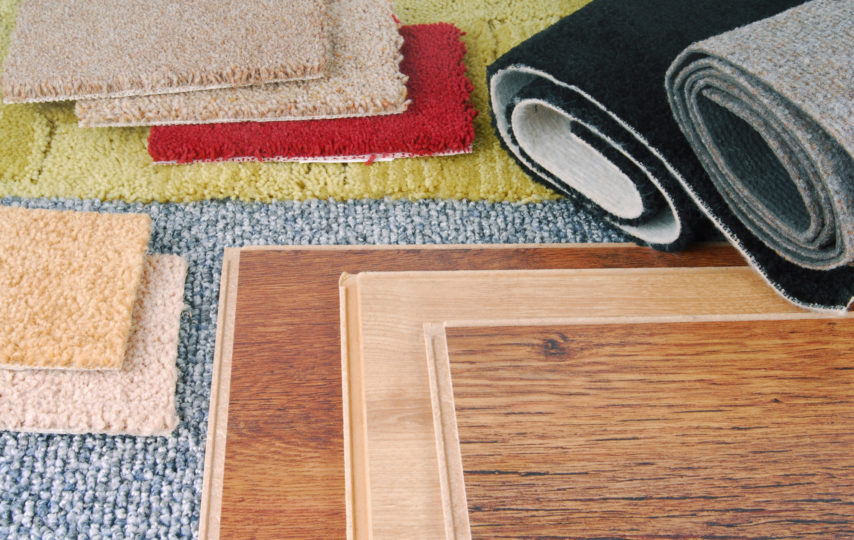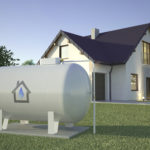When it comes to different types of flooring, it’s a hard choice between design and durability. You want a functional floor that can stand up to muddy paws and toy trucks, but you also don’t want to compromise on style.
So, how to choose flooring for the different rooms in your home? From tile flooring to hardwood flooring, we’ll break down the pros and cons of the most popular choices. We’ll go room by room, diving into the advantages and disadvantages of each flooring type.
Bathrooms and Laundry Room
The bathroom and laundry room have one thing in common. They get wet. The floor of your bathroom needs to stand up to splashing water and moisture. This is what makes tile the clear winner. Find out more about what styles make a great fit for these high-traffic areas.
Tile will handle moisture and water with ease. Whether it’s splashing from a bath or moisture from a steam shower, your floor should be able to handle water. Hardwood flooring, carpet, and even vinyl plank flooring that isn’t waterproof aren’t recommended.
In a laundry room, you also want a floor that’s tough like tile. Laundry can get messy. Your laundry room also might be off a garage or near an outside doorway where water and mud are getting tracked in. Visit policrete for more assissance with polished concrete.
Kitchen or Mudroom
The kitchen and mudroom are two of the busiest rooms in a home. Think about how much time you spend cooking, making lunches, having coffee, and eating. You need a floor that can stand up to all the action. Carpet, for example, would make for a messy choice.
Whether it’s a soggy dog or muddy kid’s feet, the floors in the mudroom need to be able to handle dirt, snow, mud, and water. Tile is an easy choice in the mudroom and the kitchen. It’s durable, waterproof, and easy to clean.
Hardwood, engineered hardwood, or vinyl plank flooring would also stand up well and look great in these high-traffic areas. In an open floor plan kitchen, think about the other spaces as well.
It’s nice to have the same flooring running throughout your kitchen and family room, for example. This also helps to make your space appear larger.
Family Room or Living Room
The family room and living room are where your family spends a lot of time. These are also where you’ll do a lot of entertaining. The flooring should feel as cozy and inviting as the room itself.
You want your flooring to stand up to traffic and last for the long haul. When it comes to resale, hardwood flooring will still give you the most bang for your buck. It also comes in a wide variety of wood species, colors, stains, and sizes.
One downside to hardwood is that it scratches easily. In a home with pets or small children, hardwood doesn’t always stand up to toys and paws. Just keep in mind that after a few years, you’ll likely want to re-stain it or buff out any major damage. A plus side is that you can do this without needing to take up the entire floor.
Engineered hardwood has a veneer of wood with plywood underneath. What’s great about these products is that they come pre-stained and finished, so there’s no mess when they get installed.
Tile in a living or family room is great for warmer climates or if you live near water. They can get wet, resist moisture, and they are easy to clean if sand gets dragged in.
In colder climates, carpet offers a cozy appeal that works well for family rooms or living rooms with small children. It’s soft and durable in playrooms as well. Keep in mind that it stains easily and won’t do well around food and spills.
Dining Room
In a dining room, tile, hardwood, engineered hardwood, or vinyl plank flooring make great choices. These can all handle spills, and you can sweep up or vacuum food easily.
Bedrooms
In the bedroom, you want something with warmth. Carpet and hardwood floors are often two of the most popular choices. You want something cozy to wake up to each day.
While carpet offers that warm, soft, look there are a few downsides to carpeting. If you have pets, for example, carpeting holds dander and pet hair. If you suffer from allergies, carpet isn’t recommended.
Basement
There are a lot of great flooring choices for your basement. In most regions, basements should have flooring that can handle water in the event of a flood. If heavy rain comes in, the basement is often the first place to see the water.
Tile, waterproof vinyl, or polished concrete will all stand up to water in the event of an emergency. Because basements tend to be cooler, radiant heat is a luxurious update for any tile floor. This will keep your basement warm and cozy despite cold temperatures.
If flooding isn’t an issue, carpet is also a warm choice in a basement. It’s soft, durable, and great for small children. If there’s even a chance of flooding, however, rule it out.
How To Choose Flooring
Knowing how to choose flooring for your home starts with thinking about its function. Whether you’re in a living room, bathroom, or kitchen, you’ll want to weigh the pros and cons of each floor type.
A bathroom needs to be waterproof, for example, while a bedroom should be warm and cozy. Go for durability first and choose the style from there. For more great home design tips and resources, head to the blog section.













